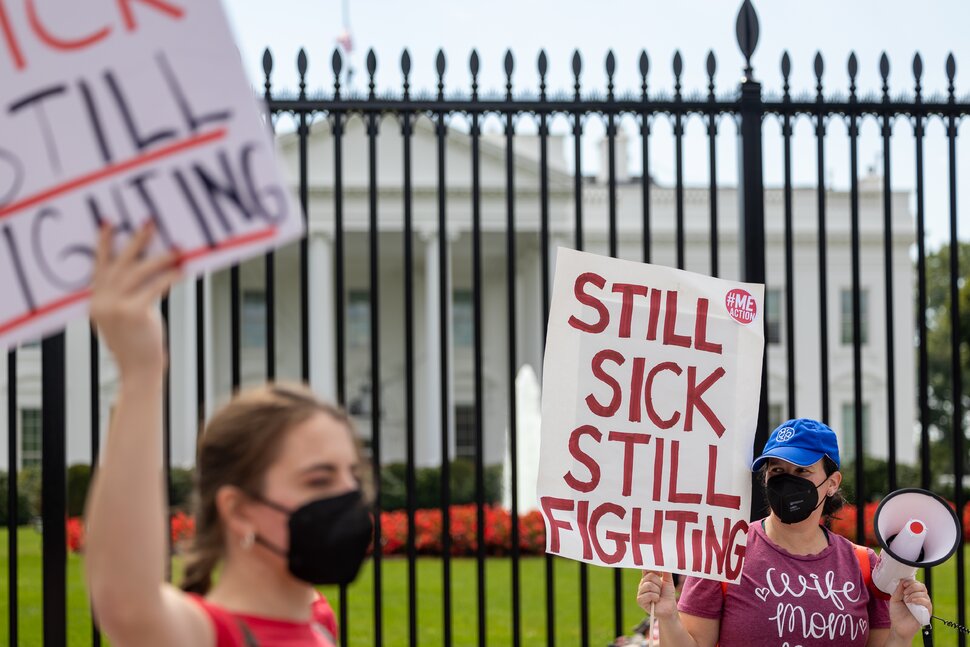Survey data indicates more than 10% of U.S. adults have battled long COVID, with Hispanics and transgender people among patients with the highest rates.
Three years into the COVID-19 pandemic, data shows many Americans have battled lingering symptoms tied to the coronavirus.
Over the course of the pandemic, more than 1 in 10 U.S. adults overall – over 36 million people – are estimated to have experienced long COVID, according to the latest Household Pulse Survey data from the U.S. Census Bureau. The bureau defines long COVID as COVID-19 symptoms that lasted three months or longer.
Collected during the first two weeks of March, the data also indicates 27% of adults who’d ever contracted COVID-19 experienced long COVID, and that about 11% were currently grappling with it.
Some states have been hit by long COVID at a higher frequency than others. The data from early March points to West Virginia as having the highest prevalence among adults who’ve had COVID-19 at 40.7%, followed by New Mexico (37.9%), Wyoming (37.9%), Mississippi (35%) and South Carolina (33.9%).
In New Jersey, sustained symptoms have affected only 18.8% of those who had COVID-19, marking the lowest rate in the nation. Adults in Alaska (20.9%), Maryland (21.6%), New York (22.9%) and Wisconsin (23.6%) are among state residents who’ve experienced prolonged symptoms at lower rates relative to the national average as well.
The prevalence of long COVID also varies across gender, race and age. The latest data indicates cisgender women are over 50% more likely to have sustained symptoms than cisgender men: Of those who had COVID-19, symptoms persisted for 32.4% of cisgender women and 20.6% of cisgender men.
At the same time, more than 4 in 10 transgender adults who have had COVID-19 have suffered enduring symptoms. Trans adults also were most likely to have debilitating symptoms: Among those for whom the impact of their experience with long COVID was known, 97.5% faced a reduced ability to carry out day-to-day activities to some extent, compared with 84% of cisgender men and 78.2% of cisgender women.
Hispanic adults and those of multiple races or races not broken out by the survey also have experienced higher rates of long COVID than the national average, according to the data. Meanwhile, only 19.5% of Asian adults who had COVID-19 were symptomatic for at least three months.
Though the pandemic has been particularly devastating to older Americans, the Household Pulse Survey data suggests that older survivors of COVID-19 are vulnerable to long COVID at a rate relatively similar to that of young adults. According to the latest data, Americans in their 50s who’d contracted COVID-19 had the highest rates of long COVID at 31.2%, followed by those in their 40s at 29.5%. Americans over 60 and those under 40 had rates no higher than 26%.
Notably, however, long COVID symptoms can be difficult to distinguish from symptoms of aging, and those who pass away from COVID-19 within three months of their infection would not be included in the survey’s long COVID counts.
The Household Pulse Survey is considered an “experimental” data product designed to provide near real-time data on the impact of the pandemic and expedite the country’s recovery. Since the survey began tracking the phenomenon of long COVID last June, the national rate of those who’ve reportedly suffered from it has dropped from 35.1% of adults infected with COVID-19 to its current mark of 27%.
Meanwhile, the spread of COVID-19 appears to have slowed from a comparatively minor winter surge, but the Centers for Disease Control and Prevention is still reporting over 100,000 weekly cases across the U.S.

